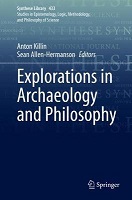Chapter 3 Mortar and Pestle or Cooking Vessel? When Archaeology Makes Progress Through Failed Analogies
Abstract
Most optimistic accounts of analogies in archaeology focus on cases
where analogies lead to accurate or well-supported interpretations of the past. This
chapter offers a complementary argument: analogies can also provide a valuable
form of understanding of cultural and social phenomena when they fail, in the sense
of either being shown inaccurate or the evidence being insufficient to determine
their accuracy. This type of situation is illustrated through a case study involving the
mortarium, a characteristic type of Roman pottery, and its relation to the so-called
Romanization debate in Romano-British archaeology. I develop an account of comparative
understanding, based on the idea that humans have a natural desire to
understand ourselves comparatively, i.e., in terms of how we resemble and differ
from societies at other times and places. Pursuing analogies can provide this type of
understanding regardless of whether they turn out to be accurate. Furthermore, analogies
can provide a similar form of understanding even when the evidence turns out
to be insufficient to determine their accuracy.
Keywords
analogies, optimism; mortaria; romanization debate; comparative understanding; value of understandingDOI
10.1007/978-3-030-61052-4_3ISBN
9783030610517, 9783050610548, 9783030610524Publisher
Springer NaturePublisher website
https://www.springernature.com/gp/products/booksPublication date and place
Cham, 2021Grantor
Classification
Archaeology


 Download
Download